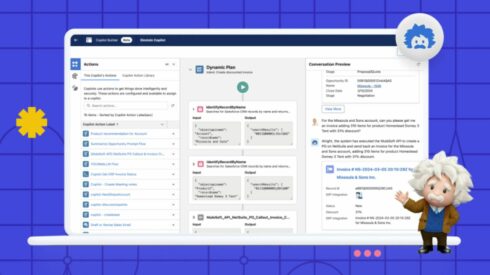
Salesforce has announced a new set of low-code tools to enable its customers to easily and quickly embed AI into their customer relationship management (CRM) applications.
The new platform, Einstein 1 Studio, builds on Einstein Copilot, which is the company’s generative AI solution. The Studio includes three main components: Copilot Builder, Prompt Builder, and Model Builder.
Copilot Builder allows users to create custom AI actions for different tasks. It provides access to use familiar tools like Apex, Flow, and Mulesoft APIs so that AI actions can be completed within the flow of work. Custom actions can be activated in any Salesforce application or external system.
Prompt Builder can be used to build AI prompts that can be reused across different experiences. For instance, a user could build a button that enables a contact center agent to get an overview of all of a customer’s escalated cases in just one click.
Model Builder provides the ability to build or import AI models. Customers can either use its low-code interface to build their own AI models that are trained on their cloud data, or integrate with existing models from Amazon, Anthropic, Azure OpenAI, Cohere, Databricks, Google Cloud, and OpenAI.
Einstein 1 Studio also introduces the Einstein Trust Layer, which is a collection of features to enforce security on generative AI, such as data masking and audit trails.
“Customers have always loved how easy it is to customize Salesforce. Our new Einstein 1 Studio makes it easy for admins and developers to build and customize Einstein Copilot and embed AI apps in the flow of work within Salesforce, tailored to the specific requirements of their company and industry,” said Clara Shih, CEO of Salesforce AI. “Built on our Einstein 1 Platform and unified by metadata that safely connects and unlocks data from across an enterprise, Einstein 1 Studio’s low-code tools democratize AI app development, unleashing a new wave of innovation that will transform workflows and augment human capabilities across every team and function.”





